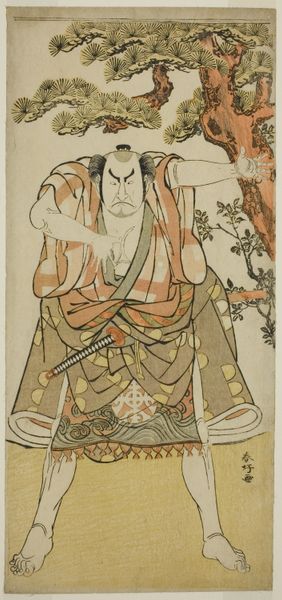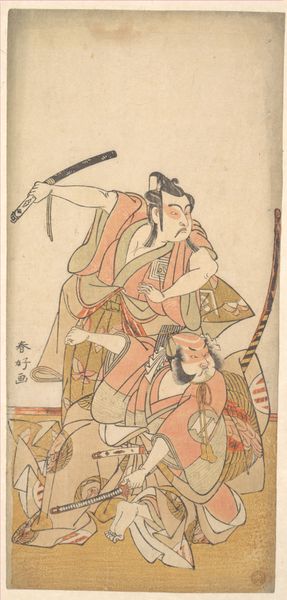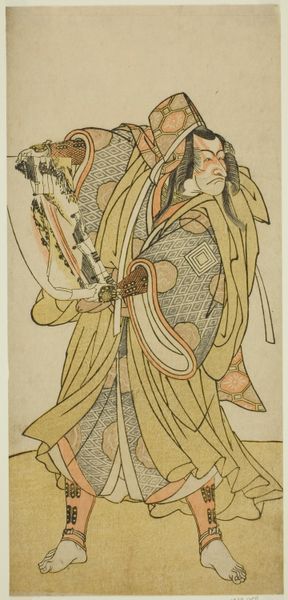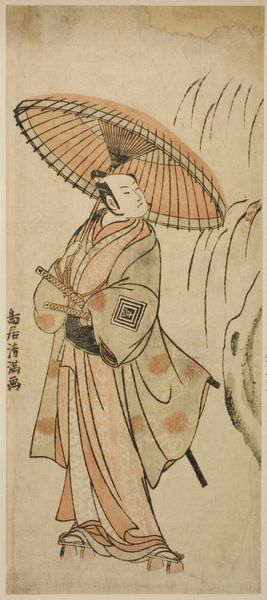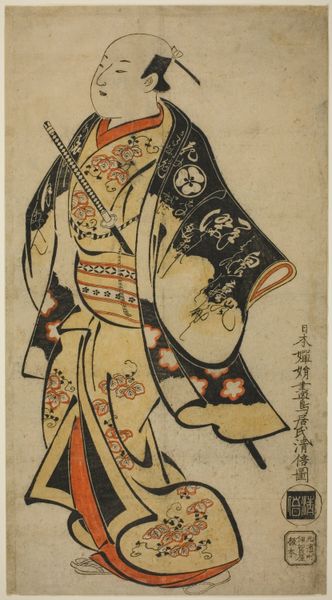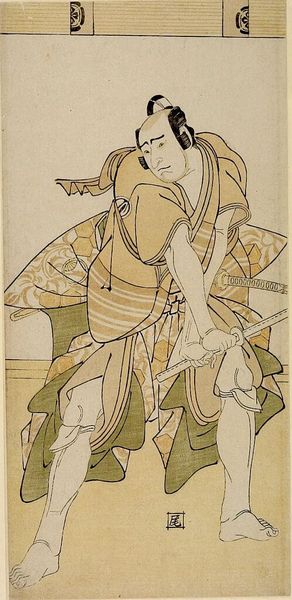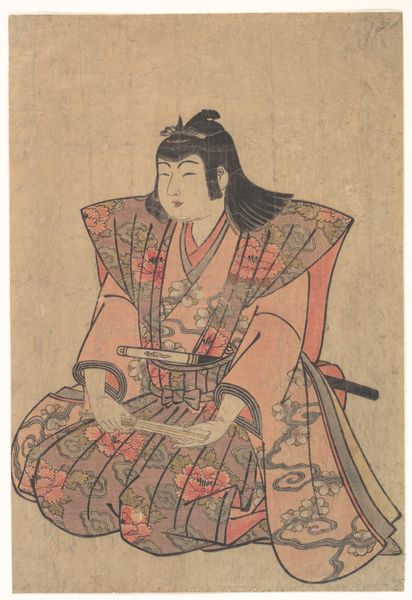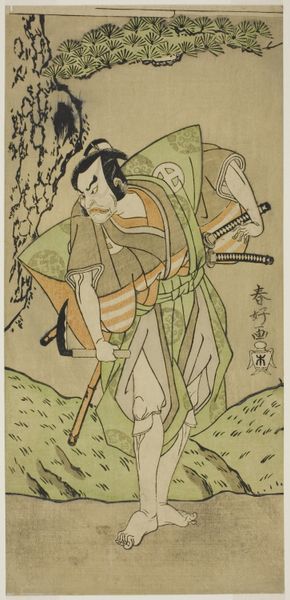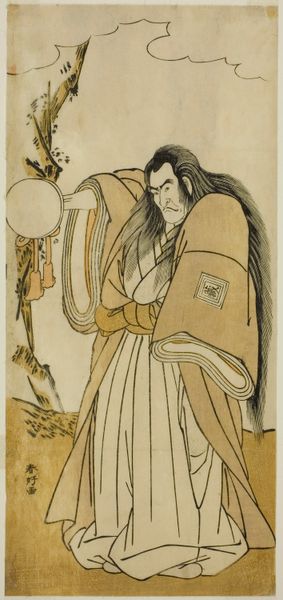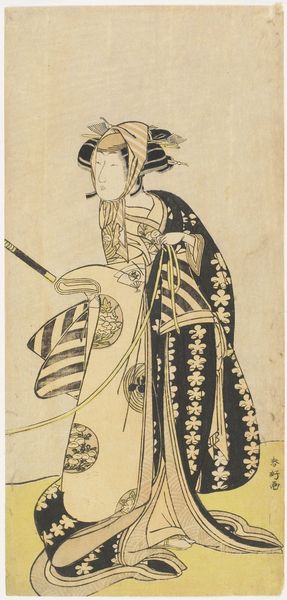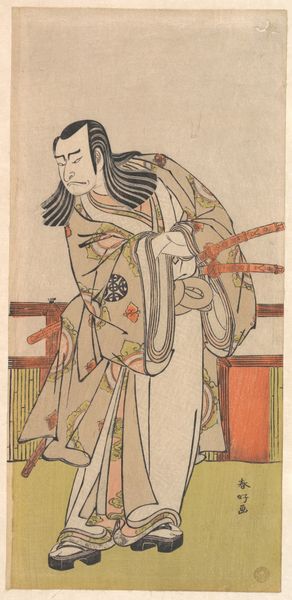
print, ink, woodblock-print
#
portrait
#
ink drawing
#
ink painting
# print
#
asian-art
#
ukiyo-e
#
japan
#
figuration
#
ink
#
woodblock-print
Dimensions: 12 1/16 × 5 5/16 in. (30.6 × 13.5 cm) (image, sheet, hosoban)
Copyright: Public Domain
Editor: Here we have Katsukawa Shun'ei’s "An Actor as a Boy," created around 1793. It's a woodblock print, a Ukiyo-e piece. The soft colors and delicate lines give it a gentle, almost melancholic feel. What do you see in this piece, especially considering the historical context of Kabuki theatre? Curator: I see a fascinating interplay of gender and performance deeply embedded within the social fabric of Edo-period Japan. Kabuki, while wildly popular, had complex relationships with societal norms. Originally, women performed, but were banned. So, young men took on female roles, a practice fraught with eroticism, social anxieties, and complex gender dynamics. Editor: That’s really interesting. So, portraying a male actor *as* a boy…does that add another layer? Curator: Absolutely. The artist is showcasing a liminal identity – a young man embodying a role within a role, further blurring gender lines on a very public stage. Think about the queer subtexts often present within performance, then and now. Also note the luxurious garments, indicators of wealth and status in a society rigidly stratified by class. Are we seeing a celebration of freedom through theatre, or a reinforcement of the social hierarchies it relies on? Editor: It sounds like this seemingly simple print actually opens up conversations about representation, gender, and class. Curator: Precisely! Art isn't created in a vacuum. It's crucial to understand these dynamics to unpack the messages it conveys. Editor: I’ll definitely keep that in mind when viewing other Ukiyo-e prints. It makes you realize how much social commentary can be packed into one image. Curator: Indeed, the personal and political are always intertwined in art. It gives one plenty to contemplate!
Comments
No comments
Be the first to comment and join the conversation on the ultimate creative platform.
